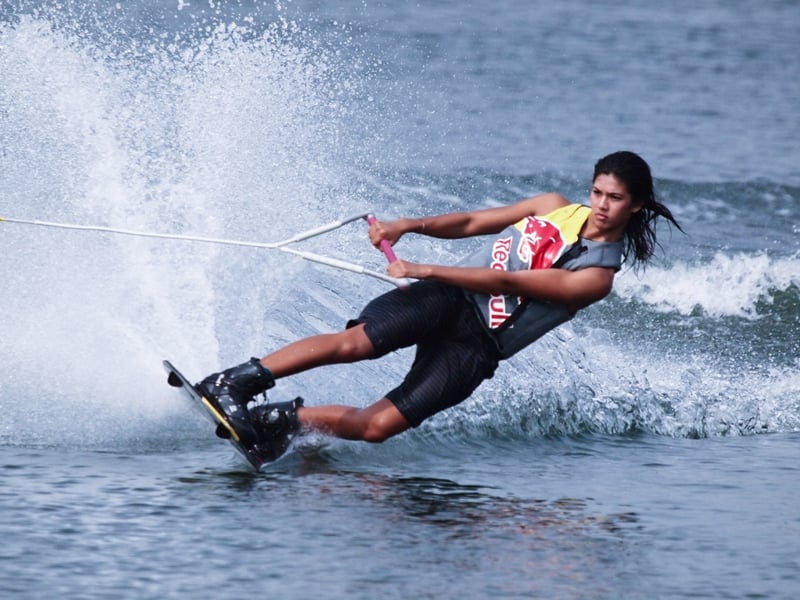Rules of Waterskiing

Image credit: Jere Chong/SportSG
Considered a recreational activity to most, water skiing is very popular around the world. Despite its popularity as a recreational activity, water skiing is also a competitive sport. Water skiing involves pulling an individual along the surface of a water body, either by a boat or a cable ski installation. The individual can choose to use either two skis or one slalom ski to coast along the surface of the water.
Water skiers typically start in substantially deep water, either with their skis already on or they can choose to put on their skis in the water. It is considerably easier to put on your skis while in the water, as they are easier to manipulate when wet.The individual will then be thrown a rope from the boat, and he should position it between the skis. Next, he will crouch in the water while still holding onto the rope, leaning on his back with knees bent and legs pulled in close to the chest. In this position, he should also have his skis pointing upwards.
The driver of the boat (or cable ski installation, depending on which system the individual is using) will start the boat, pulling the individual along with him once he has given a signal that he is ready. As the boat accelerates, the rope will be pulled taut and he will then attempt to get into an upright position by pushing his legs out in front of him while still leaning back.
Water skiers have to clear 25 buoys during a competition, placed at turns. They will have to shift their weight to the left or right in order to turn properly. Additionally, each buoy will be more challenging than the previous. For instance, the speed of the boat will increase after one has cleared a buoy, and the rope will be shortened considerably after he has reached maximum speed, making it harder for him to pass. A competitive attempt will come to an end if a buoy is missed or if the competitor falls into the water.
Water ski competitions are typically scored based on a number of factors, including the number of buoys that one has managed to clear, the speed of the boat (or cable ski installation) and the length of the rope.
To receive the latest updates on the happenings in the Singapore sports scene, or to find out more about some of the latest programmes on offer at ActiveSG, like our Facebook page here.



